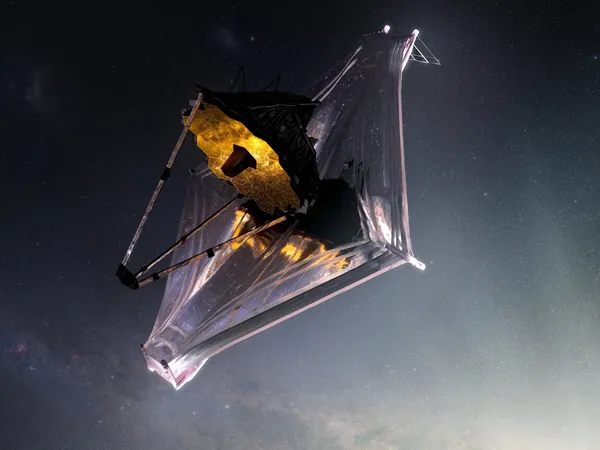
Unraveling the Mystery of FCC 224: The Dwarf Galaxy Without Dark Matter!
2025-04-15
Author: Sarah
In a groundbreaking discovery, astronomers at the W. M. Keck Observatory in Hawaii have stumbled upon a dwarf galaxy that appears to defy the very principles of galaxy formation. Dubbed FCC 224, this ultra-diffuse galaxy lies about 60 to 65 million light-years from Earth, on the fringes of the Fornax Cluster.
What makes FCC 224 so extraordinary is its surprising deficiency of dark matter, a key ingredient that most galaxy formation theories rely on. This revelation shakes the foundations of our understanding, as only one other dark matter-deficient galaxy, located in the NGC 1052 group, has been previously recognized.
Two Studies, One Astonishing Conclusion
This peculiar galaxy has been the focus of two important studies. The first, led by PhD candidate Yimeng Tang from the University of California, Santa Cruz, and featured in the Astrophysical Journal, delves into FCC 224's unique globular star clusters.
The second study, helmed by Maria Luísa Buzzo from Swinburne University and published in Astronomy & Astrophysics, examines the dark matter content of FCC 224 and theorizes about its origins.
Buzzo notes, "Globular clusters typically indicate how much dark matter a galaxy harbors. However, FCC 224 hosts an atypically high number of luminous clusters without apparent dark matter, at least in its inner regions. The conventional galaxy formation models simply can't explain this anomaly!"
Searching for Answers
Utilizing high-resolution spectroscopy from the Keck Cosmic Web Imager, Buzzo compared FCC 224 to previously identified dark matter-free galaxies, DF2 and DF4, within the NGC 1052 group. This comparative research shed light on whether FCC 224 shares characteristics with these rare galaxies.
Tang, leveraging imaging data from NASA's Hubble Space Telescope (HST), revealed that FCC 224's star clusters resemble those of other dark matter-deficient galaxies, suggesting a link between the clusters and the absence of dark matter. Both researchers emphasized that their findings challenge the conventional galaxy formation narrative.
A New Perspective on Galaxy Formation
Buzzo explained how the advanced imaging capabilities of the Keck Observatory allowed them to measure the velocities of stars and globular clusters within FCC 224 with unprecedented precision. Their findings confirmed a remarkably low velocity dispersion, which is indicative of a lack of dark matter.
Both teams agree that further investigations are essential to unlock the mystery of FCC 224's formation. One prominent theory suggests that an external force like a high-speed collision could have caused a separation between the galaxy’s visible and dark matter, leading to what’s known as the 'bullet-dwarf model.' More data is needed to ascertain the validity of this hypothesis.
The Road Ahead
Buzzo remarked, "FCC 224 is pivotal in our quest to uncover and study other galaxies lacking dark matter. By broadening our sample size, we can enhance our understanding of these exceptional galaxies and their formation mechanisms, as well as the elusive role of dark matter in dwarf galaxies."




 Brasil (PT)
Brasil (PT)
 Canada (EN)
Canada (EN)
 Chile (ES)
Chile (ES)
 Česko (CS)
Česko (CS)
 대한민국 (KO)
대한민국 (KO)
 España (ES)
España (ES)
 France (FR)
France (FR)
 Hong Kong (EN)
Hong Kong (EN)
 Italia (IT)
Italia (IT)
 日本 (JA)
日本 (JA)
 Magyarország (HU)
Magyarország (HU)
 Norge (NO)
Norge (NO)
 Polska (PL)
Polska (PL)
 Schweiz (DE)
Schweiz (DE)
 Singapore (EN)
Singapore (EN)
 Sverige (SV)
Sverige (SV)
 Suomi (FI)
Suomi (FI)
 Türkiye (TR)
Türkiye (TR)
 الإمارات العربية المتحدة (AR)
الإمارات العربية المتحدة (AR)